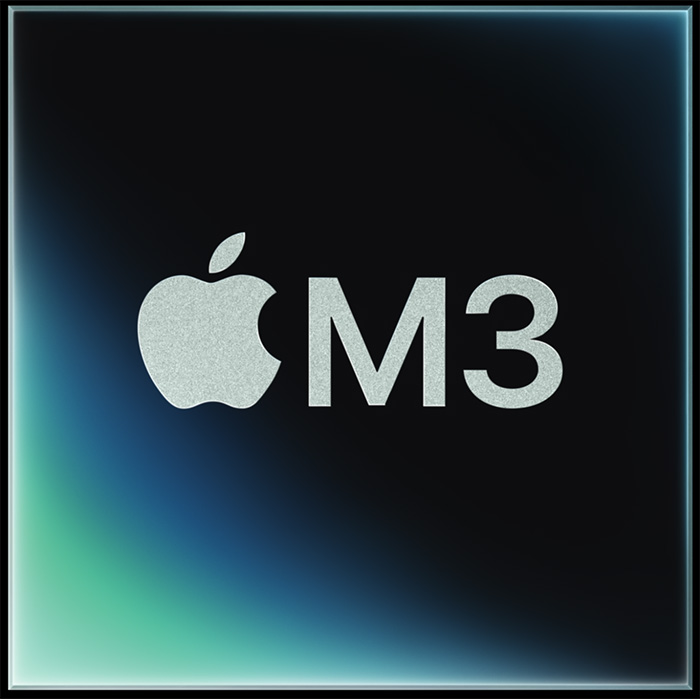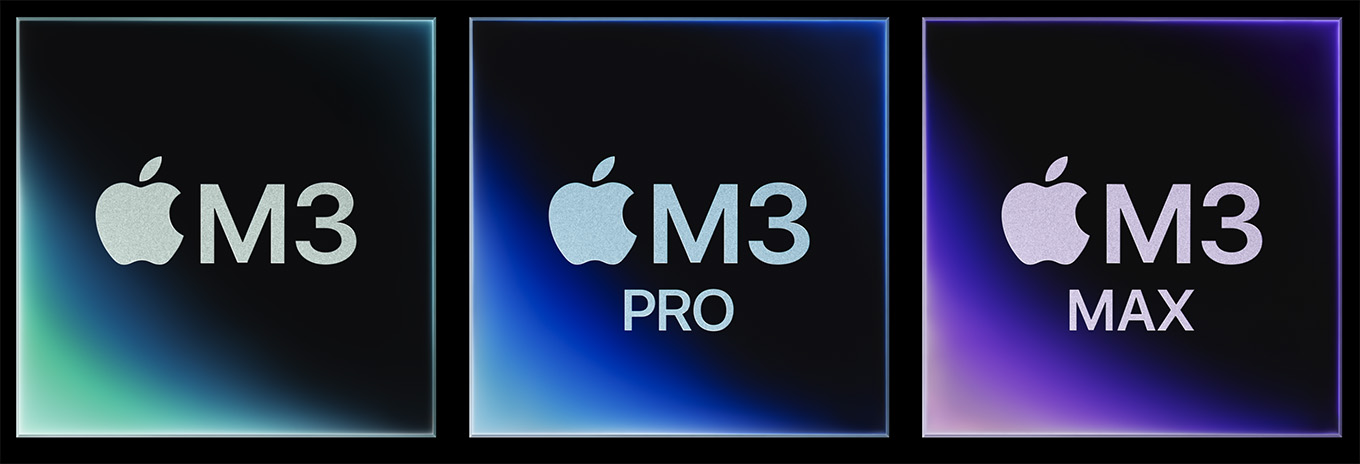 [Updated Nov. 19, 2023, with small clarifications.]
[Updated Nov. 19, 2023, with small clarifications.]
One of the key benefits of Apple silicon computers is the use of Unified Memory. But… what is it, why is it important and how much do we need?
IN THE PAST
Unlike earlier Intel-based systems, where the CPU is one chip, the GPU is a second chip and the RAM is a series of separate chips, in M-series computers, Apple put all these different components on one very large chip.
NOTE: This unified “chip” is actually called an SoC (pronounced “S-O-C”), which stands for System-on-Chip. A simple definition is: “A group of processing units on a single chip, which previously were independent chips that had to be connected together.” (The Free Dictionary)
In the past, when doing any computer task, files were loaded into system RAM, then the CPU took the file out of RAM and processed it. Then the CPU sent parts of the file to the GPU for processing. Before it could work on it, the GPU copied the file into it’s own VRAM (Video RAM memory), processed it, stored the new files into VRAM, copied the files from VRAM back into system RAM and notified the CPU that the new files were ready for additional processing, or saving to storage.
In other words, a LOT of time was spent shuttling files back and forth between components. Whenever a computer is copying files, rather than processing them, it is wasting time.
Worse, the memory size of these different chips varied. For example, system RAM might be 16 GB, but the GPU only had 2 GB of VRAM. Even more shuttling was necessary to provide the GPU with the files it needed when it needed them.

(Image courtesy Sergei Starostin/Pexels.com)
WHY DOES RAM EVEN EXIST?
Let’s say a “traditional processor runs at a clock speed of 4 GHz during a turbo boost. At this clock speed, a processor can perform tasks in a quarter of a nanosecond. However, storage drives, like SSDs and HDDs, can only supply data to the CPU every ten milliseconds—that’s 10 million nanoseconds. That means in the time between the CPU finishing processing the data it’s working on and receiving the next batch of information, it’s sitting idle.
“This clearly shows that storage drives can’t keep up with the processor’s speed. Computers solve this problem by using primary storage systems like RAM. Although this memory system cannot store data permanently, it is much faster when compared to SSDs. It can send data in as little as 8.8 nanoseconds: infinitely faster than the quickest SSDs right now.” (MakeUseOf.com)

(Courtesy Apple Inc.)
ENTER UNIFIED MEMORY
Unified memory combines all these separate memory “pools” into the main system RAM. All chips access this same pool; no file copying needed. Even better, the GPU has the exact same amount of memory as the CPU; no extra shuttling of files to fill, empty and re-fill a small VRAM bucket.
Unified memory vastly improves processing speeds because it:
Another huge benefit to Unified memory is that because it is built into the SoC and located very close to both the CPU and GPU on the same chip, it delivers data transfer speeds (bandwidth) up to 800 GB/second! This is stunningly, mind-numbingly, impossible-to-imagine fast. (Thunderbolt 3/4 transfers data at “only” 2.8 GB/second.)

(The architecture of an M3 Pro SoC. Courtesy of Apple Inc.)
THE BIG TRADE-OFF
The big trade-off is that because unified memory is built into the SoC itself we can’t expand memory. It’s like a window screen, all the components (CPU, GPU, RAM, et al) are woven together into one single mesh. You can’t replace just a part of it.
This inability to upgrade the RAM coupled with our desire to use the computer for years to come, creates anxiety about how much RAM we really need. The short answer is less RAM than you might think.
NOTE: If you have the money, buy whatever you want. But, if you are on a budget, you can get a fast, powerful, state-of-the-art system without breaking the bank.

RAM RECOMMENDATIONS
I no longer recommend 8 GB RAM for anyone wanting to do “professional work.” If Apple supported upgrading RAM, starting with 8 GB to save money would be OK. But because RAM is not upgradable, 8 GB is far too limiting to be worth the money you spend. I understand why RAM is not upgradable, but not why Apple sells it.
When buying systems, I don’t recommend buying the smallest amount of RAM, nor the largest. I recommend an amount in the middle. Personally, my M1 MacBook Pro has 32 GB of RAM and my M2 Mac Studio has 64 GB. Neither has ever had a problem editing any video frame size, multicam stream count, or effect I’ve given it.
NOTE: Even the fastest systems still need to render during export. Don’t overspend to achieve perfect real-time playback when using proxies delivers faster performance at far less cost.

(Image courtesy Suzy Hazelwood/Pexels.com)
THE FALACY OF FUTURE-PROOFING
I’ve felt this fear every time I buy a new Mac: “What if Apple does something in the future that requires more RAM? Maybe I should buy more.”
Of course Apple, and every other software developer, is creating new stuff. That’s what tech does. However, developers don’t release different versions of their software based upon how much RAM you have. They release software that runs well on all current and recent Macs; regardless of how much RAM they have.
Mathematics is at the heart of all software. Whether you have 16 GB or 192 GB of RAM, the math in your software is the same. The results are the same, regardless of how much RAM you have.
More RAM may be more “efficient” because more of a large file can be cached into RAM for processing, but the speed of the internal drives on all current Macs is now so fast that the delay caused by cacheing is no longer significant.
In other words, buy the system that meets your needs for the next couple of years and you’ll be fine for years to come.
10 Responses to The Benefits of Apple Unified Memory
Larry, thank you so much for the expertise and clarity you freely share. You make the world of video editing a better place. We appreciate the truth you share. Happy Thanksgiving!
David:
Happy Thanksgiving to you, too! I enjoy writing articles like this – it helps me better understand the technology and explain it to you.
Larry
This article came at the exact moment I needed it. Thank you Larry for all that you do. I’ve been reading your news letters for over a decade now and in my option your articles are the industry standard for staying up to date.
Happy Thanks Giving Larry! Thankful for you and your team.
Ryan:
Thank you for your very kind words!
Larry
Larry, I’m not sure if this is a naive question but since I have a 2019 Mac Pro w 3.3 GHz 12 core intel Xeon W the only way to upgrade to a SOC system is to purchase a new computer, right? Apple didn’t build the Mac Pro with ability to install their chips, right?
Patrick:
Not naive at all – its a good question.
And you are correct, the only way to upgrade to Apple silicon is to buy a new computer, they can not be retro fit into an older Mac Pro.
Larry
Thanks and enjoy the holiday
Wouldn’t that be brilliant though – because this iMac 5K screen is so very good. I’d love to give it a 2nd life by replacing the motherboard with an M3 motherboard. Alas…dreaming won’t make this one real.
As we transition into unified memory, this article is invaluable. Thank you, Larry.
[…] The Benefits of Apple Unified Memory […]